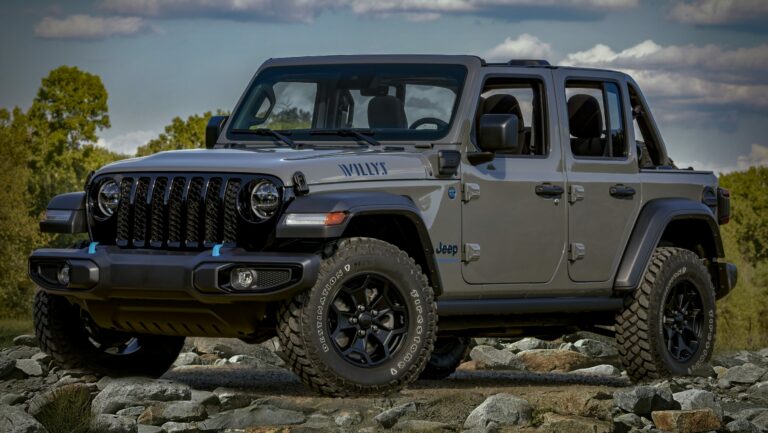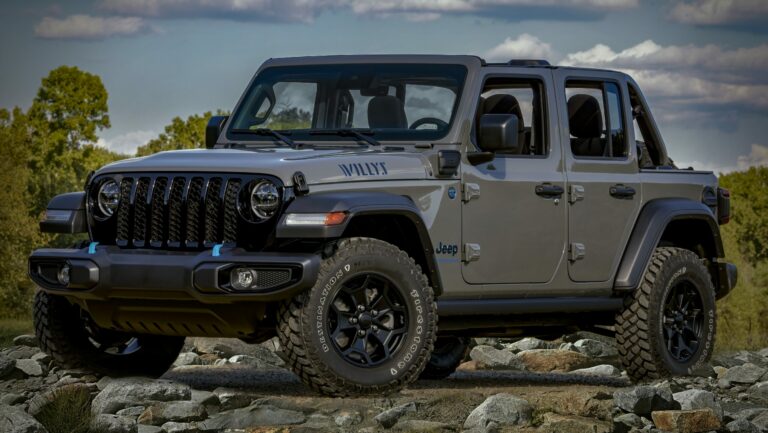Used Jeep Dana 44 Axles For Sale: Your Ultimate Buyer’s Guide
Used Jeep Dana 44 Axles For Sale: Your Ultimate Buyer’s Guide jeeps.truckstrend.com
For any serious Jeep enthusiast, the term "Dana 44" conjures images of rugged durability, enhanced off-road capability, and the satisfying crunch of rocks beneath a well-built rig. When it comes to upgrading your Jeep’s drivetrain, particularly the axles, the Dana 44 stands out as a legendary choice, offering a significant leap in strength and reliability over the factory-installed Dana 30 or Dana 35 found in many models. This comprehensive guide will delve into everything you need to know about finding, evaluating, and purchasing used Jeep Dana 44 axles for sale, transforming your vehicle into an even more formidable off-road machine.
The Enduring Appeal of the Dana 44: Why It’s a Top Choice
Used Jeep Dana 44 Axles For Sale: Your Ultimate Buyer’s Guide
The Dana 44 axle has earned its reputation for strength and versatility through decades of reliable service in various applications, from light trucks to heavy-duty SUVs and, of course, Jeeps. Compared to its smaller siblings, the Dana 30 (front) and Dana 35 (rear), the Dana 44 boasts a larger ring gear, stronger axle shafts, and a more robust housing, making it far more resistant to bending, breaking, and stripping under the stresses of aggressive off-roading, larger tires, or powerful engine upgrades.
Key Benefits of Upgrading to a Dana 44:
- Superior Strength: The larger ring and pinion gears, combined with a stronger housing, significantly increase torque capacity and resistance to breakage.
- Enhanced Durability: Better suited to withstand the abuse of larger tires (35-inch and up), lockers, and challenging trails.
- Wider Aftermarket Support: The Dana 44 has an enormous aftermarket, offering an unparalleled selection of lockers, gear sets, chromoly shafts, heavy-duty covers, and other upgrade components.
- Improved Resale Value: A Jeep equipped with Dana 44s, especially properly installed and maintained ones, often commands a higher resale value due to its enhanced capabilities.
- Peace of Mind: Knowing your axles can handle the trail provides confidence to push your Jeep further.

For many Jeep owners, especially those looking to tackle more extreme terrain or install larger tires, upgrading to Dana 44s is not just an option but a crucial necessity.
Identifying Dana 44 Axles in Jeeps: What to Look For
Before you start hunting for used Dana 44s, it’s essential to know which Jeep models came equipped with them and how to identify them. While many Jeeps came with Dana 30/35 combinations, certain factory configurations and special editions featured the Dana 44.
Common Jeep Models with Factory Dana 44 Axles:
- Jeep Wrangler TJ (1997-2006):
- Rear: All Rubicon models came with front Dana 44 and rear Dana 44. Some non-Rubicon TJs (especially with the Tow Package or automatic transmission) might have a rear Dana 44. Look for a large, flat-bottomed differential cover.
- Front: Only TJ Rubicon models came with a front Dana 44 (low pinion).
- Jeep Wrangler LJ (Unlimited 2004-2006):
- Rear: All LJs came with a rear Dana 44.
- Front: Only LJ Rubicon models came with a front Dana 44.
- Jeep Wrangler JK/JKU (2007-2018):
- Rear: All JK/JKU models came with a rear Dana 44. This is important: while it’s a D44, the JK rear D44 is often considered slightly weaker than the TJ rear D44 due to smaller axle tubes and shaft diameter, though still stronger than a D35.
- Front: Only JK Rubicon models came with a front Dana 44 (high pinion).
- Jeep Cherokee XJ (1984-2001):
- Rear: Some XJ models, particularly those with the tow package or certain year ranges, might have a rear Dana 44. These are becoming harder to find.
- Jeep Grand Cherokee ZJ/WJ (1993-2004):
- Rear: Limited models or those with a tow package sometimes had a Dana 44a (aluminum housing), which is generally considered less desirable than the cast iron Dana 44. Avoid the 44a if maximum strength is your goal.
- Older Jeeps (CJ Series, YJ Wrangler):
- Some CJ models and early YJs had Dana 44 rears, but these are often narrower and may require more adaptation for modern Jeeps.
Visual Identification Tips:
- Differential Cover Shape: The most reliable way to identify a Dana 44 is by its differential cover.
- Dana 44: Typically has a distinct, somewhat oblong shape with a flat bottom and often 10 bolts. The bottom edge of the cover will often be noticeably flat or slightly angled.
- Dana 30: Rounder, often with a slightly pointed bottom.
- Dana 35: Oval-shaped with a more rounded bottom than the D44.
- Axle Tube Diameter: Dana 44s generally have larger diameter axle tubes than Dana 30s or 35s.
- Pinion Yoke: While not definitive, the pinion yoke on a Dana 44 is usually beefier than on a Dana 30/35.
- Tags/Stamping: Some axles may have metal tags or stamped numbers indicating the axle model, but these are often missing or obscured on used units.
Key Considerations When Buying Used Dana 44 Axles
Purchasing used axles requires careful inspection and a clear understanding of your needs. Here’s a checklist of critical factors:
-
Condition of the Axle:
- Rust: Surface rust is common and usually cosmetic. Excessive rust, especially around welds or the diff cover, can indicate structural issues.
- Bent Tubes: Inspect the axle tubes for any signs of bending or damage. A straight edge can help.
- Pinion and Yoke Play: Check for excessive play in the pinion. A little is normal, but a lot can mean worn bearings.
- Bearing Play: Lift the vehicle and check for play at the wheel hubs. This can indicate worn wheel bearings or ball joints (on front axles).
- Leaks: Look for oil leaks around the pinion seal, diff cover, and axle seals.
- Gears: While hard to inspect without opening, ask about the history. Listen for grinding or whining during a test drive if the axle is still installed.
- Shafts: Ask if the original shafts are still in place or if they’ve been upgraded. Bent or twisted shafts are a red flag.
-
Gear Ratio:
- This is paramount! Your front and rear axles MUST have the same gear ratio. If buying a pair, ensure they match. If buying one to pair with an existing axle, confirm its ratio.
- Common ratios include 3.73, 4.10, 4.56, 4.88, 5.13, etc. Your tire size and engine power will dictate your ideal ratio.
-
Locker/Limited Slip Differential (LSD) Status:
- Some factory Dana 44s (e.g., Rubicon models) come with selectable lockers. Others might have aftermarket lockers or LSDs.
- Determine if the axle includes a locker, an LSD, or is open. This significantly impacts the price and your off-road performance.
-
Axle Width:
- Different Jeep models have different axle widths (e.g., TJ, JK, XJ, CJ). Ensure the width is compatible with your vehicle or that you’re prepared to adapt it (e.g., using wheel spacers or different wheels).
- For example, JK axles are wider than TJ axles.
-
Bolt Pattern:
- TJ/XJ/YJ/CJ: Typically 5×4.5 inches.
- JK: 5×5 inches.
- Older Jeeps/Other Models: Could be 6×5.5 inches or other patterns.
- Ensure the bolt pattern matches your wheels or plan for adapters/new wheels.
-
Brake Type:
- Most modern Dana 44s come with disc brakes. Older units might have drums. Ensure the brake setup is complete and functional, or budget for a brake upgrade/rebuild.
-
Steering Components (for Front Axles):
- If buying a front axle, check the condition of the ball joints, tie rod, drag link, and steering knuckles. These can add significant cost if they need replacement.
-
Location and Shipping:
- Axles are heavy and bulky. Local pickup is ideal to save on shipping costs and allow for in-person inspection.
- If shipping is necessary, factor in freight costs, which can be substantial.
Where to Find Used Dana 44 Axles
The hunt for the perfect used Dana 44 can be an adventure in itself. Here are the most common places to look:
- Online Marketplaces:
- Craigslist/Facebook Marketplace: Excellent for local finds. Use specific search terms like "Jeep Dana 44," "TJ Rubicon axles," "JK Dana 44." Be prepared to travel.
- Dedicated Jeep/4×4 Forums: Many forums have "for sale" sections. Enthusiasts often sell parts from their builds. Examples: JeepForum.com, JK-Forum.com, Pirate4x4.com.
- eBay: Can find a wider selection, but shipping can be expensive, and in-person inspection isn’t possible.
- Junkyards/Salvage Yards:
- The holy grail for some. Prices can be excellent, but selection is hit-or-miss, and parts are sold "as-is." You’ll need to know exactly what you’re looking for and be prepared to remove it yourself.
- Specialty Jeep/4×4 Shops:
- Many shops that do axle swaps or custom builds often have used axles from donor vehicles or trade-ins. They might be more expensive but often come pre-inspected or even rebuilt.
- Off-Road Clubs/Word-of-Mouth:
- Networking with other enthusiasts can lead to hidden gems. Someone might be upgrading and selling their old D44s.
The Buying Process: A Step-by-Step Guide
-
Define Your Needs:
- What Jeep model do you have?
- What tire size do you plan to run?
- What type of off-roading will you do? (This determines gear ratio and locker needs).
- What’s your budget? (For the axles themselves, plus potential rebuild/upgrade parts).
-
Research and Browse:
- Look at various listings. Compare prices, conditions, and included components.
- Don’t jump on the first deal you see.
-
Contact the Seller:
- Ask specific questions:
- What year and model Jeep did they come from?
- What is the gear ratio? (Ask for photos of the ring gear stamping if possible).
- Does it have a locker or LSD? Which one?
- Are there any known issues (leaks, noise, bent parts)?
- Why are they selling?
- Can you provide more photos/videos?
- Ask specific questions:
-
Inspect Thoroughly (Preferably In-Person):
- Bring a flashlight, a straight edge, and a friend if possible.
- Check all the points mentioned in the "Key Considerations" section.
- If possible, see the axle rotate or move to check for binding/noise.
-
Negotiate Price:
- Be realistic but don’t be afraid to offer a lower price, especially if you identify issues.
- Factor in the cost of any necessary rebuild components (seals, bearings, ball joints, brakes).
-
Arrange Transport:
- Axles are heavy. Ensure you have appropriate transport (trailer, truck, strong friends).
Common Upgrades and Maintenance for a Used Dana 44
Even a well-maintained used Dana 44 can benefit from some attention before installation:
- Fluid Change: Always drain and refill with fresh gear oil.
- Seal Replacement: Pinion seal and axle seals are relatively inexpensive and easy to replace, preventing future leaks.
- Bearing Replacement: Consider replacing inner and outer axle bearings, and pinion bearings if there’s any doubt about their condition.
- Ball Joints (Front Axle): A common wear item. Replace them if there’s any play.
- Brake Inspection/Replacement: Check pads, rotors, calipers. Replace as needed.
- Re-gearing: If the existing gear ratio doesn’t match your needs, this is the time to re-gear.
- Locker Installation: If the axle is open, consider installing a locker for maximum traction.
- Heavy-Duty Diff Cover: A thick, aftermarket diff cover offers added protection against rocks.
- Chromoly Axle Shafts: For extreme off-roading, upgrading to stronger chromoly shafts is a popular choice.
Potential Challenges and Solutions
- Finding the Right One: It can take time. Be patient and persistent.
- Shipping Costs: Very high for axles. Prioritize local finds or factor shipping into your budget.
- Hidden Damage: Always a risk with used parts. Inspect thoroughly, ask for detailed photos/videos, and buy from reputable sellers.
- Installation Complexities: Axle swaps can be involved. If you’re not comfortable with welding, suspension work, and brake lines, budget for professional installation.
- Compatibility Issues: Double-check widths, bolt patterns, and pinion types (high vs. low) to ensure the axle is compatible with your Jeep and existing components.
Estimated Price Range for Used Jeep Dana 44 Axles
Please note: These are estimates and prices can vary wildly based on location, condition, included components (gears, lockers, brakes), and the specific market. Always do your own research for current local pricing.
| Axle Type & Jeep Model | Condition & Components | Estimated Price Range (USD) | Notes |
|---|---|---|---|
| TJ/LJ Dana 44 Rear | Open, Stock Gears, Good Condition, No Brakes | $500 – $1,000 | Good base for upgrades. |
| TJ/LJ Dana 44 Rear | Rubicon, Stock Locker, Stock Gears, Good Condition, With Brakes | $1,200 – $2,500 | Highly sought after. |
| TJ/LJ Dana 44 Front | Rubicon, Stock Locker, Stock Gears, Good Condition, With Brakes & Steering | $1,500 – $3,000+ | Rare and very desirable. Often sold in pairs with rear. |
| JK Dana 44 Rear | Open, Stock Gears, Good Condition, With Brakes | $400 – $800 | All JKs have rear D44s, more common. |
| JK Dana 44 Front | Rubicon, Stock Locker, Stock Gears, Good Condition, With Brakes & Steering | $1,500 – $3,000+ | High-pinion, very popular for swaps. |
| XJ Dana 44 Rear | Open, Stock Gears, Good Condition, No Brakes | $300 – $700 | Harder to find, often narrower. |
| Dana 44 Pair (Front & Rear) | TJ/LJ Rubicon, Stock Lockers, Matched Gears, Good Condition | $3,000 – $5,000+ | Premium price for a complete, factory-matched set. |
| Dana 44 Pair (Front & Rear) | JK Rubicon, Stock Lockers, Matched Gears, Good Condition | $3,000 – $5,500+ | Excellent for wider stance swaps. |
| Core Axle (Damaged/Needs Full Rebuild) | Any Dana 44, Bent/Bad Gears/No Brakes | $100 – $400 | For experienced builders only, significant additional cost. |
Frequently Asked Questions (FAQ)
Q1: Can I put a JK Dana 44 axle in my TJ?
A1: Yes, it’s a popular swap, but it’s not a direct bolt-in. JK axles are significantly wider than TJ axles (65.5" vs. 60.5"), requiring new wheels with different backspacing or wheel adapters. You’ll also need to adapt spring perches, control arm mounts, and potentially steering components.
Q2: What’s the difference between a high-pinion and low-pinion Dana 44?
A2: A high-pinion axle (like the JK front Dana 44) has the pinion gear mounted higher on the ring gear. This provides better driveshaft angles for lifted vehicles and engages the strong "drive side" of the gear teeth under acceleration. A low-pinion axle (like the TJ front Dana 44) has the pinion mounted lower, engaging the "coast side" of the gear teeth under acceleration, which is generally considered weaker. For a front axle, high-pinion is almost always preferred.
Q3: How do I know if the gears in a used Dana 44 are good?
A3: Visual inspection is difficult without opening the differential. Look for signs of proper care, such as clean fluid and no external leaks. Ask the seller about any noise or issues. If possible, spin the input yoke and listen for grinding or excessive play. Ultimately, for peace of mind, plan on having them professionally inspected or re-geared upon purchase.
Q4: Is it worth rebuilding a used Dana 44?
A4: Absolutely. Many used Dana 44s are excellent candidates for a full rebuild. Replacing bearings, seals, and potentially ball joints (for front axles) ensures reliability. This allows you to install your desired gear ratio and choice of locker, effectively giving you a "new" axle for potentially much less than buying a new aftermarket unit.
Q5: What tools do I need for installation?
A5: An axle swap is a significant undertaking. You’ll need:
- Jack stands and a floor jack.
- Basic hand tools (wrenches, sockets, pry bar).
- Torque wrench.
- Grinder and welder (if spring perches/control arm mounts need modification).
- Brake line tools (flaring tool, line wrenches) if you’re replacing lines.
- A good service manual for your Jeep model.
- Safety gear (gloves, eye protection).
Conclusion
The Dana 44 axle remains a cornerstone of serious Jeep builds, offering a robust and reliable upgrade path for those pushing their vehicles beyond the limits of stock components. While the search for used Dana 44 axles for sale can be challenging, armed with the knowledge of identification, critical inspection points, and smart buying strategies, you can find a fantastic deal that significantly enhances your Jeep’s off-road prowess. Remember to prioritize thorough inspection, understand the compatibility requirements, and factor in potential rebuild costs. With the right Dana 44s under your Jeep, you’ll unlock a new level of confidence and capability on the trail, ready for whatever obstacles lie ahead.




